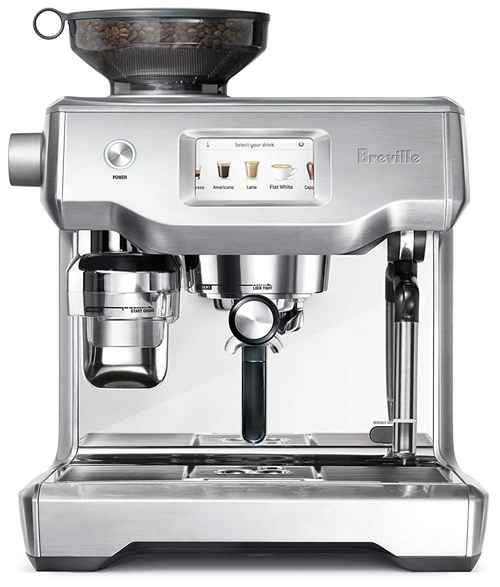Cafe Latte Recipe [+Tips]
Note: This page contains affiliate links.
As an Amazon Associate, I earn from qualifying purchases when you click on the link, but you are not charged extra.
Oh, the Café Latte – such a beloved classic that’s practically a worldwide coffee hug in a cup! If you’ve ever wandered into a cozy coffee shop on a rainy morning or needed that creamy, dreamy jolt of caffeine during a hectic day, chances are you’ve met a latte before. But what makes this drink so special? It’s the beautiful harmony between robust espresso and silky steamed milk, topped with just a whisper of foam.
- Old World Christmas Beans: Tastes like the holidays in every cup — discover the cozy magic of Old World Christmas Beans before the season slips away.
- Kirkland Sumatra French Roast : Dark, bold, and wildly smooth—why Kirkland’s Sumatra French Roast is the best-kept secret of serious coffee drinkers.
- Hot Fudge Whole Bean Coffee : What happens when dessert meets coffee? Meet the decadent whole bean that tastes like hot fudge—but better.
- Aroma Ridge Guatemala Antigua Medium Roast : From the highlands of Guatemala to your morning mug—this rich, balanced roast is waking up coffee lovers everywhere.
- Juan Valdez Cumbre Colombian Coffee : Crafted by Colombia’s most iconic coffee legend—why Cumbre is a must-try for fans of bold, authentic flavor.
This isn’t just coffee; it’s an experience. The latte’s origins trace back to Italy, where it was known as ’caffè latte’ – literally “milk coffee”. But over the years, it’s evolved into a staple in cafes everywhere, with endless ways to customize and enjoy it. Today, I’m going to walk you through every little detail: from the ingredients you need, how to make it perfectly at home, some insider pro tips, variations to mix things up, and a final sprinkle of inspiration to keep your latte journey brewing.
Ready? Let’s dive deep into the creamy, caffeinated world of the Café Latte.
- 1 Ingredients For Café Latte Recipe
- 2 How To Make Café Latte?
- 3 Expert Tips
- 4 Recipe Variations
- 5 Final Words
- 6 FAQs
- 6.1 What Is A Cafe Latte?
- 6.2 How Do You Make A Cafe Latte At Home?
- 6.3 Can I Make A Cafe Latte Without An Espresso Machine?
- 6.4 What Type Of Milk Is Best For A Cafe Latte?
- 6.5 How Much Espresso Is In A Cafe Latte?
- 6.6 What Is The Ratio Of Espresso To Milk In A Cafe Latte?
- 6.7 Can I Flavor My Cafe Latte?
- 6.8 How Do I Froth Milk For A Cafe Latte?
- 6.9 What Is The Difference Between A Cafe Latte And A Cappuccino?
- 6.10 Can I Make A Decaf Cafe Latte?
Ingredients For Café Latte Recipe
Here’s the foundational lineup – simple, quality ingredients are the secret sauce to an unforgettable latte:
-
Espresso
- The soul of the latte. You’ll need about 1 to 2 shots (30-60 ml).
- Use freshly ground coffee beans with a medium-fine grind for the best extraction.
- Arabica beans are preferred for their balanced flavor and subtle sweetness.
-
Milk
- Whole milk is classic for a rich, creamy texture.
- But you can use alternatives like oat milk, almond milk, soy milk, or even coconut milk if you prefer dairy-free options.
- About 8-10 ounces (240-300 ml), depending on your cup size and desired milk-to-espresso ratio.
-
Optional Sweeteners And Flavorings
- Sugar, honey, or flavored syrups like vanilla, caramel, or hazelnut.
- Cinnamon or cocoa powder for dusting on top.
-
Water
- For brewing the espresso (if using an espresso machine).
How To Make Café Latte?
Making a café latte is a beautiful ritual – a little science, a little art, and a lot of deliciousness. Here’s how to do it step-by-step:
-
Prepare Your Espresso
- Grind your coffee beans fresh just before brewing.
- Use an espresso machine or a stovetop moka pot to pull 1 or 2 shots of espresso.
- The espresso should be dark, intense, and have a nice crema on top.
-
Steam The Milk
- Pour cold milk into a frothing pitcher (preferably stainless steel).
- Use the steam wand on your espresso machine or a handheld milk frother to heat and froth the milk.
- Aim for about 150-155°F (65-68°C). The milk should be creamy with microfoam – tiny, velvety bubbles, not big foam bubbles.
- If you don’t have a steamer, you can warm milk gently on the stove and whisk vigorously to create foam.
-
Combine Espresso And Milk
- Pour the espresso into your favorite cup.
- Slowly add the steamed milk, holding back the foam with a spoon.
- Then, spoon a thin layer of foam on top – that signature frothy crown.
-
Optional Finishing Touches
- Sprinkle cinnamon or cocoa powder for an aromatic finish.
- Add flavored syrups or sweeteners if you want to jazz it up.
Expert Tips
Here’s where things get really interesting – tips from the barista pros to elevate your latte game:
-
Espresso Quality Is Everything
Freshly ground beans, clean machine, right pressure (9 bars) – don’t skip this.
-
Milk Temperature Control
Overheated milk tastes burnt and loses sweetness. Underheated milk is flat and watery. Aim for that sweet spot around 150°F.
-
Microfoam Mastery
To create that silky smooth microfoam, position your steam wand just below the milk surface, let in air for 1-2 seconds, then submerge to swirl the milk. The whirlpool effect helps create even texture.
-
Latte Art Practice
Pour slowly and steadily. Tilt the cup to control flow. Even beginners can impress with a simple heart or rosette!
-
Cup Choice Matters
A wide-mouthed cup helps the aroma bloom, and a ceramic cup retains heat better than glass or paper.
-
Don’t Rush
Take your time with each step – the ritual enhances flavor and enjoyment.
Recipe Variations
Who says lattes have to be basic? Here are some delightful spins you can try:
-
Vanilla Latte
Add 1-2 teaspoons of vanilla syrup before pouring the milk. Sweet, aromatic, and comforting.
-
Caramel Latte
Drizzle caramel sauce inside the cup, then pour espresso and milk. Top with caramel drizzle.
-
Mocha Latte
Mix 1 tablespoon of cocoa powder or chocolate syrup with the espresso before adding milk. Chocolate + coffee = heaven.
-
Iced Latte
Brew espresso and cool it down. Pour over ice with cold milk instead of steamed.
-
Spiced Latte
Add a pinch of cinnamon, nutmeg, or pumpkin spice to the milk while steaming for a seasonal twist.
-
Matcha Latte
For a caffeine alternative, whisk matcha powder into warm milk instead of espresso.
-
Dairy-Free Lattes
Use oat or almond milk for creaminess and nutty flavor. These also froth surprisingly well!
Final Words
Making a café latte at home can feel like your own little coffee ceremony. The beauty is in the details – the rich espresso, the frothy milk, the aroma that fills the air, and the warmth that soothes your soul. It’s an indulgence, a creative outlet, and a comfort all in one cup.
Even if you don’t have fancy equipment, simple tweaks and care can produce a latte you’ll be proud of. And once you get the hang of it, experimenting with flavors, milk types, and temperatures becomes an exciting journey.
So next time you crave that creamy cup of joy, give this recipe a whirl – it’s worth every sip.
FAQs
What Is A Cafe Latte?
A cafe latte, or simply a latte, is a coffee drink made with espresso and steamed milk, typically topped with a small amount of foam. It has a creamy texture and a mild coffee flavor compared to stronger espresso drinks like cappuccinos or Americanos.
How Do You Make A Cafe Latte At Home?
To make a cafe latte at home, brew one shot of espresso using an espresso machine or strong coffee using an alternative method. Heat milk (about 6-8 ounces) until it’s steamed but not boiling, then pour the espresso into a cup and add the steamed milk. Top with a small amount of foam.
Can I Make A Cafe Latte Without An Espresso Machine?
Yes, you can make a cafe latte without an espresso machine by using a French press, AeroPress, or even a stovetop espresso maker. The key is to brew strong coffee that mimics the intensity of espresso.
What Type Of Milk Is Best For A Cafe Latte?
Whole milk is commonly used for a rich, creamy texture. However, you can substitute with almond milk, oat milk, or skim milk depending on dietary preferences. Non-dairy milks, such as oat milk, tend to froth well and provide a creamy consistency.
How Much Espresso Is In A Cafe Latte?
A traditional cafe latte consists of one shot of espresso, typically around 1 ounce (30 mL). If you prefer a stronger coffee flavor, you can add more shots of espresso, but one shot is standard.
What Is The Ratio Of Espresso To Milk In A Cafe Latte?
The typical ratio of espresso to milk in a cafe latte is about 1:3, meaning for every 1 ounce (30 mL) of espresso, you’ll use about 6-8 ounces (180-240 mL) of steamed milk. This gives the latte a creamy consistency without overpowering the coffee flavor.
Can I Flavor My Cafe Latte?
Yes, you can add flavored syrups like vanilla, caramel, hazelnut, or even chocolate to your cafe latte. Add the syrup to the espresso shot before adding the steamed milk for even distribution.
How Do I Froth Milk For A Cafe Latte?
To froth milk for a cafe latte, you can use a steam wand (common in espresso machines), a handheld milk frother, or a French press. Heat the milk to around 150°F (65°C), then froth until you achieve a creamy, velvety foam. Avoid over-heating the milk to prevent a burnt taste.
What Is The Difference Between A Cafe Latte And A Cappuccino?
The main difference lies in the milk-to-foam ratio. A cafe latte has more steamed milk and a light layer of foam, while a cappuccino has equal parts espresso, steamed milk, and foam, resulting in a frothier texture and stronger coffee flavor.
Can I Make A Decaf Cafe Latte?
Yes, you can make a decaf cafe latte by using decaffeinated espresso beans or decaf coffee. The process is the same as a regular cafe latte, but the espresso will be free of caffeine.

